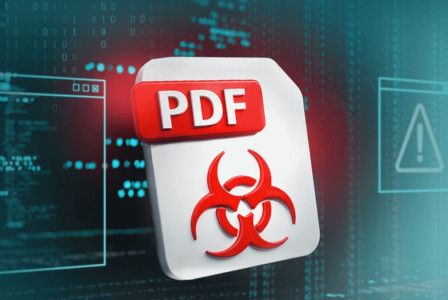SEARCH
5 ways hackers exploit outdated software

SHARE IT
Software updates are often a low priority—especially for small businesses with limited time and resources. However, when systems fall behind on updates, they become significantly more vulnerable to cyberattacks.
According to Accenture’s Cost of Cybercrime study, 43% of cyberattacks target small businesses, but only 14% of them are adequately prepared to defend themselves. Many entrepreneurs operate using a mix of old and new software, unaware that this patchwork can create security gaps that hackers are all too eager to exploit.
Outdated software is not just obsolete—it can lead to data breaches, ransomware infections, and financial loss, warns global cybersecurity company ESET. To protect your business, it’s essential to understand exactly how attackers take advantage of these weaknesses—and what you can do to stay ahead.
Exploiting Unpatched Vulnerabilities
One of the most common attack vectors hackers use is unpatched vulnerabilities. Verizon’s 2024 Data Breach Investigations Report revealed that 14% of breaches involved the exploitation of known software vulnerabilities—almost triple the percentage reported in 2023. While software developers release updates to fix bugs, improve functionality, and close security gaps, failure to install those updates in time leaves systems open to attackers actively scanning for such flaws.
The infamous WannaCry ransomware attack, which caused billions of dollars in damages worldwide, stemmed from exactly this type of vulnerability.
Automating software updates can significantly reduce the risk of human error or oversight. Tools like patch management solutions can automatically detect outdated programs, download necessary updates, and deploy them across the organization. However, not all updates are created equal—priority should be given to critical patches that fix high-risk issues. A risk-based approach ensures that the most dangerous vulnerabilities are addressed first. Routine vulnerability scans also help detect overlooked updates and reduce exposure.
Attacks on Legacy Systems
Legacy systems are often the backbone of essential operations in sectors like healthcare and public administration. Cybercriminals exploit these outdated platforms knowing they’re deeply embedded in an organization’s workflow and house valuable data. An attack on such systems can have widespread consequences—disrupting supply chains, halting services, and eroding customer trust.
If replacing legacy systems isn’t immediately feasible, organizations must implement mitigation strategies. Network segmentation—isolating outdated systems from the rest of the infrastructure—can minimize the attack surface. In the event of a breach, segmentation helps contain the damage and prevent lateral movement across the network.
For systems that can’t be patched, “virtual patching” offers an alternative. This involves deploying security tools that simulate the effect of a software update, identifying and blocking exploitation attempts on known vulnerabilities. While full replacement may not be possible, developing a phased transition plan to modern platforms is essential for long-term security.
Ransomware Infections via Outdated Software
Ransomware remains one of the most lucrative tools in a cybercriminal’s arsenal, and outdated software provides an easy entry point. Once installed, ransomware encrypts vital files, rendering them inaccessible until a ransom is paid. The financial impact can be severe—millions lost in recovery efforts, downtime, and reputational harm.
To combat this threat, businesses should invest in advanced endpoint protection that detects and blocks ransomware at its point of entry. These tools often use behavior-based detection to identify and neutralize malicious activity in real time. In addition, maintaining regular and secure backups of critical data allows for swift recovery in case of an attack. Backups should be stored offline or in secure cloud environments to prevent tampering by threat actors.
Outdated Email Clients Increase Phishing Success
Phishing campaigns become even more effective when targeting businesses using outdated email applications. Attackers can bypass spam filters and make malicious emails appear legitimate. Employees are then more likely to click on harmful links or download infected attachments, giving cybercriminals access to internal systems.
Since phishing remains one of the top cybersecurity threats for small businesses, employee training is vital. Awareness programs should focus on:
- Recognizing phishing attempts
- Verifying the authenticity of email messages
- Understanding the risks of clicking unknown links or opening suspicious files
Additionally, advanced email filtering solutions can help block these messages, flag suspicious content, and detect malicious attachments before they reach the inbox. Even if credentials are compromised, enabling multi-factor authentication (MFA) adds an extra layer of protection, making unauthorized access far more difficult.
Noncompliance Risks with Outdated Software
Beyond security threats, outdated software can also put businesses at risk of regulatory noncompliance. Frameworks like HIPAA, GDPR, and CCPA require the use of updated and secure systems to protect sensitive information. Failure to comply can result in heavy fines, reputational damage, and loss of customer trust. Cybercriminals are well aware of compliance gaps and often target organizations that lack the resources or awareness to meet regulatory standards.
Conducting regular software and compliance audits ensures systems remain aligned with the latest legal requirements. Managed service providers (MSPs) can assist by overseeing updates, monitoring systems, and proactively addressing vulnerabilities. Maintaining detailed records of patch histories, software versions, audit timelines, and compliance actions also demonstrates accountability during inspections.
Prevention Starts with Structure
Defending against outdated software threats isn’t just a matter of technology—it requires a security-first culture and clear organizational priorities. Leadership plays a key role in allocating resources and structuring system maintenance and protection strategies.
Clear policies, interdepartmental collaboration, and regulatory compliance must be at the core of any cybersecurity plan. Meanwhile, AI- and machine learning-powered solutions are enhancing endpoint protection and network monitoring. These technologies can detect threats in real time and even predict potential vulnerabilities before they are exploited. Cloud-based patch management systems also streamline the update process, ensuring consistent protection for both on-site and remote teams.
With the right structure and technology in place, businesses can secure their data, build trust, and prevent the devastating impact of a serious security breach.
MORE NEWS FOR YOU

 Help & Support
Help & Support 

